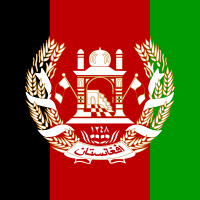In the realm of non-profit organizations, donor engagement is not merely a buzzword; it is a fundamental pillar that supports the sustainability and growth of any initiative. Engaging donors goes beyond the act of soliciting funds; it involves building meaningful relationships that foster trust and loyalty. When donors feel connected to an organization, they are more likely to contribute not just financially but also through advocacy and volunteerism.
This emotional investment can lead to long-term partnerships that are invaluable for NGOs striving to make a difference in their communities. Moreover, effective donor engagement can significantly enhance an organization’s reputation. When donors are kept informed about how their contributions are making an impact, they become ambassadors for the cause, sharing their experiences with others and encouraging new supporters to join.
This word-of-mouth marketing is often more powerful than traditional advertising, as it comes from a place of genuine connection and belief in the mission. Therefore, NGOs must prioritize donor engagement as a strategic approach to fundraising, ensuring that every interaction is meaningful and reinforces the value of their contributions.
Utilizing Social Media and Online Platforms
In today’s digital age, social media and online platforms have emerged as powerful tools for NGOs to connect with potential donors and engage existing supporters. These platforms offer a unique opportunity to share stories, showcase impact, and create a sense of community around a cause. By leveraging social media channels such as Facebook, Instagram, Twitter, and LinkedIn, organizations can reach a broader audience and cultivate relationships with individuals who may not have been aware of their work otherwise.
To maximize the effectiveness of social media engagement, NGOs should focus on creating compelling content that resonates with their audience. This could include sharing success stories, behind-the-scenes glimpses of projects, or testimonials from beneficiaries. Visual content, such as videos and infographics, can be particularly engaging and shareable, helping to spread awareness and encourage donations.
Additionally, organizations should actively engage with their followers by responding to comments, asking for feedback, and encouraging discussions around their mission. This two-way communication fosters a sense of belonging and encourages supporters to become more involved.
Implementing Personalized Communication Strategies
Personalization is key to effective donor engagement. In an era where individuals are inundated with generic messages, tailored communication can make all the difference in capturing attention and fostering loyalty. NGOs should strive to understand their donors’ preferences, interests, and motivations for giving.
This information can be gathered through surveys, feedback forms, or even casual conversations during events. By segmenting their donor base according to these insights, organizations can craft targeted messages that resonate with each group. For instance, a donor who has previously supported education initiatives may appreciate updates on new programs or success stories related to that area.
Conversely, a supporter passionate about environmental conservation may be more interested in updates on sustainability efforts. By delivering personalized content that aligns with donors’ interests, NGOs can create a deeper connection and demonstrate that they value their supporters’ contributions. This approach not only enhances donor satisfaction but also increases the likelihood of repeat donations.
Leveraging Data and Analytics to Target Donor Interests
In the age of information, data analytics has become an invaluable asset for NGOs looking to enhance their fundraising efforts. By analyzing donor behavior and preferences, organizations can gain insights into what motivates their supporters to give. This data-driven approach allows NGOs to tailor their fundraising strategies more effectively, ensuring that they are reaching the right people with the right messages at the right time.
For example, organizations can track donation patterns to identify trends among different donor segments. Are certain demographics more likely to contribute during specific campaigns? Do some donors respond better to particular types of outreach?
By answering these questions through data analysis, NGOs can refine their strategies and allocate resources more efficiently. Additionally, utilizing donor management software can help organizations maintain detailed records of interactions and preferences, enabling them to personalize communication further and strengthen relationships over time.
Creating Interactive and Immersive Fundraising Experiences
In an increasingly competitive fundraising landscape, NGOs must find innovative ways to capture the attention of potential donors. One effective strategy is to create interactive and immersive fundraising experiences that engage supporters on a deeper level. These experiences can take various forms, from virtual reality tours of project sites to interactive online events that allow donors to see firsthand the impact of their contributions.
For instance, hosting a live-streamed event where beneficiaries share their stories can create an emotional connection that resonates with viewers. Additionally, incorporating gamification elements into fundraising campaigns—such as challenges or competitions—can encourage participation and foster a sense of community among supporters. By making the fundraising experience enjoyable and engaging, NGOs can inspire donors to contribute while also building lasting relationships that extend beyond a single transaction.
Embracing Mobile and Digital Giving Options
As technology continues to evolve, so too do the ways in which individuals prefer to give. Embracing mobile and digital giving options is essential for NGOs looking to stay relevant and accessible to potential donors. Mobile giving allows supporters to contribute quickly and easily through their smartphones, while digital platforms provide opportunities for recurring donations and crowdfunding campaigns.
To effectively implement mobile giving options, NGOs should ensure that their websites are optimized for mobile use and consider partnering with established mobile payment platforms. Additionally, organizations can leverage text-to-give campaigns that allow donors to contribute via SMS messages—a convenient option for those who may not have access to traditional payment methods at the moment. By embracing these modern giving options, NGOs can cater to the preferences of a tech-savvy audience while also streamlining the donation process.
In conclusion, mastering donor engagement is crucial for NGOs seeking sustainable funding and support for their missions. By understanding the importance of building relationships with donors, utilizing social media effectively, implementing personalized communication strategies, leveraging data analytics, creating immersive experiences, and embracing mobile giving options, organizations can enhance their fundraising efforts significantly. As the landscape of philanthropy continues to evolve, those who adapt and innovate will be best positioned to thrive in their pursuit of positive change.








































